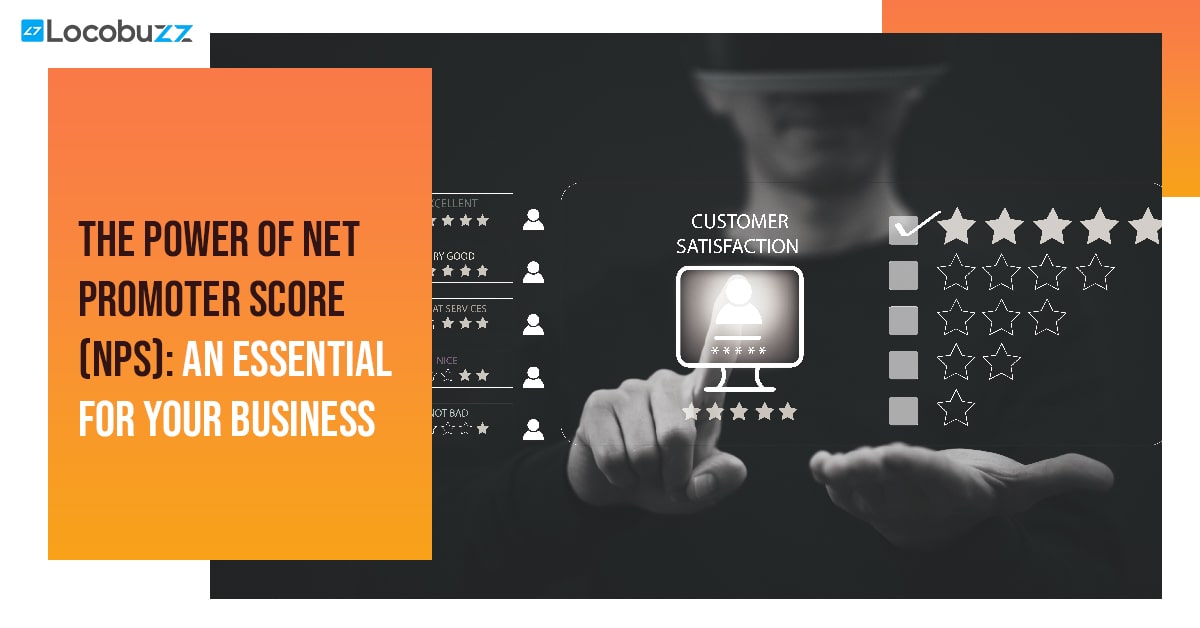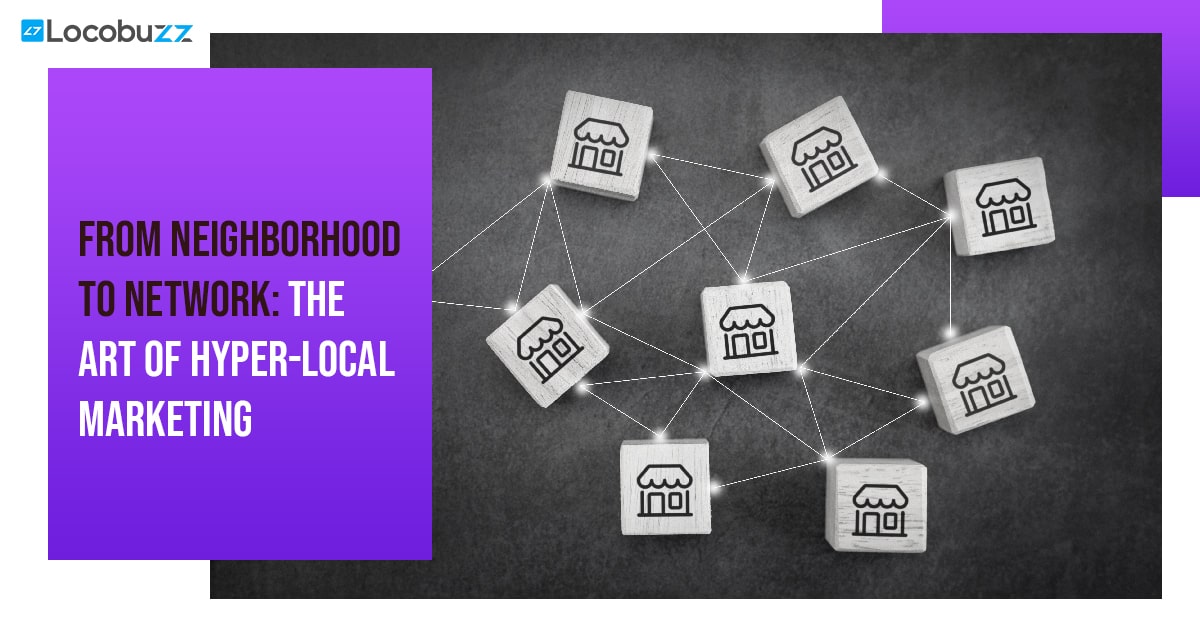The Power of Net Promoter Score: An Essential for Your Business
 Customer satisfaction and loyalty have become increasingly important factors for businesses today. With an ever-growing market and increasing competition, businesses must focus on delivering exceptional customer experiences to create long-lasting relationships with their customers.
Customer satisfaction and loyalty have become increasingly important factors for businesses today. With an ever-growing market and increasing competition, businesses must focus on delivering exceptional customer experiences to create long-lasting relationships with their customers.
One effective way to measure customer satisfaction and loyalty is through the Net Promoter Score (NPS). The NPS is a customer loyalty metric that has gained widespread popularity across various industries as a simple and effective way to measure customer loyalty.
Table of Contents
What is the Net Promoter Score (NPS)?
The Net Promoter Score (NPS) scale is a popular metric for determining customer loyalty and satisfaction with a given good, service, or brand. Respondents are divided into three categories: Detractors, Passives, and Promoters.
Detractors
Clients who give a low rating on the NPS scale, which typically ranges from 0 to 6. Dissatisfied customers are more likely to spread negative rumours about a brand, product, or service. Detractors might have had a negative experience, run into problems, or otherwise been unhappy for some reason.
Passives
Promoters
By deducting the percentage of critics from the percentage of supporters, the NPS score is calculated. Although passives are not directly taken into account when calculating the NPS score, they can still affect overall customer satisfaction and loyalty.
Organisations can evaluate their customer base, pinpoint areas for improvement, and monitor alterations in customer sentiment over time by understanding the distribution of respondents across these three categories. A higher NPS score, which indicates strong customer loyalty and satisfaction, is desired by increasing the proportion of promoters and reducing the proportion of detractors.
How to Calculate NPS:
To calculate the NPS, the percentage of detractors is subtracted from the percentage of promoters. The resulting score can range from -100 to 100. A score of 0 indicates an equal number of promoters and detractors, while a score of 100 indicates that all customers are promoters.
Over time, the use of NPS has evolved beyond a simple metric to a management system for improving customer loyalty and business performance. Companies use NPS data to identify areas for improvement and to track progress over time. NPS has also become an industry standard, with many companies benchmarking their NPS score against competitors and using it as a key performance indicator (KPI).
Why is NPS Important for Businesses?
The NPS is an important tool for businesses because it provides a simple, yet effective way to measure customer loyalty and satisfaction. By calculating the percentage of promoters and detractors, businesses can get a clear idea of their customer loyalty and satisfaction levels.
Furthermore, the NPS can also help businesses identify areas for improvement. For instance, if a business has a high percentage of detractors, it may indicate that there are issues with their customer service, product quality, or other aspects of their business. By identifying these areas, businesses can take action to improve and create a better customer experience.

NPS in Action
Many companies today use the NPS to measure customer loyalty and satisfaction. For instance, companies like Apple, Amazon, and Google have consistently high NPS scores, indicating that they have strong customer loyalty and satisfaction levels.
Moreover, the NPS can also help businesses compare their performance against their competitors. By benchmarking their NPS scores against industry averages, businesses can identify areas where they are falling behind and take action to improve.
Variations of the standard NPS question include asking for the reason behind the score or adding additional questions to the survey to gain more insights into specific aspects of the customer experience.
One of the main advantages of NPS is its simplicity and ease of use. The question is straightforward, and the calculation is simple, making it easy for companies to implement and track over time. Additionally, because the question is focused on likelihood to recommend, it can provide valuable insights into customer loyalty and potential word-of-mouth marketing.
The NPS metric has the ability to provide a benchmark for comparison against competitors or industry standards. Because the NPS is calculated using a standardized methodology, companies can easily compare their scores to those of their competitors or industry averages. This can provide valuable insights into areas where the company may be lagging behind or excelling in terms of customer satisfaction and loyalty.
Moreover, NPS can be used to track changes in customer satisfaction over time, providing insights into the effectiveness of customer experience initiatives or changes in company strategy. By tracking NPS scores over time, companies can identify trends and make data-driven decisions to improve the customer experience and increase customer loyalty.
However, there are also some criticisms of NPS as a customer satisfaction metric. Some argue that the scale is too narrow and doesn’t provide enough granularity to truly understand customer satisfaction levels. Others suggest that the standard NPS question is too simplistic and doesn’t provide enough context for why a customer may or may not recommend a product or service. Additionally, some experts question the validity of the NPS methodology, arguing that it doesn’t necessarily provide a complete picture of customer satisfaction and loyalty.
NPS relies on a single question and a numerical scale. Some argue that this may oversimplify the customer experience and not provide enough context to truly understand why a customer may or may not recommend a product or service. Additionally, the scale may not provide enough granularity to differentiate between customers who are satisfied versus those who are truly loyal.
Despite these criticisms, NPS remains a popular and widely used metric in many industries. Companies can use NPS as a starting point for understanding customer satisfaction and loyalty, while also supplementing it with additional measures and qualitative feedback to gain a more complete understanding of the customer experience. Ultimately, NPS can be a valuable tool for companies looking to improve their customer experience and build long-term relationships with their customers.
How to run surveys and collect NPS feedback
Surveying your customers and obtaining their Net Promoter Score (NPS) feedback can be an efficient way to gain insightful information from them. You can use the following steps to conduct surveys and gather NPS feedback:
1. Determine your goals: Establish your objectives for conducting the survey and gathering NPS data in detail. Decide what specific data you want to collect and how you’ll use it to enhance your offerings to customers or your services.
2. Identify your target market: Decide which demographic of users or customers you want to poll. This could apply to every customer you have or just a certain group of them.
3. Select a surveying tool: Choose a survey tool based on your requirements. There are a variety of options, including custom surveys on your website or app as well as online survey platforms like SurveyMonkey, Google Forms, Typeform, and SurveyMonkey.
4. Make your survey: Make a well-structured survey that asks both NPS-related questions as well as additional questions that give background information and new perspectives. The NPS question typically asks, “On a scale of 0-10, how likely are you to recommend our product/service to others?” Ask follow-up questions to elucidate the factors influencing the result.
5. Keep the survey concise and targeted: Make sure your survey is concise and easy to complete. Long surveys may result in lower response rates and responses of lower quality.
6. Pick a distribution strategy for the survey: Choose the method for distributing the survey to your intended audience. You can choose from invitations sent via email, pop-ups on websites, posts on social media, or in-app notifications. Choose the method that works best for reaching your audience.
7. Set a timeline: Define the duration of the survey and set a deadline for responses. This will help create a sense of urgency for participants and ensure timely data collection.
8. Encourage participation: Make a compelling argument to persuade people to participate and to emphasize the value of their feedback. To increase survey completion rates, think about providing rewards like discounts or access to special content.
9. Data analysis: After the survey period is over, gather and examine the survey responses. Subtract the percentage of critics (those who gave a score of 0–6) from the percentage of supporters (those who gave a score of 9–10) to arrive at your NPS. Gain qualitative insights by analyzing open-ended feedback.
10. Respond to criticism: Utilize the survey results to pinpoint areas that need improvement and implement the suggested solutions. Address issues, make necessary adjustments, and let your customers know what you’re doing to improve their experience.
11. Iterate and reiterate: Gathering feedback and conducting surveys should be ongoing processes. Run surveys frequently to monitor changes in NPS and consumer sentiment over time, allowing you to keep improving your goods and services.
Take care when handling customer data and make sure privacy laws are followed. To maintain confidentiality, be transparent about data usage and anonymize responses when reporting results.
You can efficiently conduct surveys and gather NPS feedback by following these steps in order to gain insightful information and improve your customer experience.
Implementing NPS effectively requires careful planning and execution.
Designing effective NPS surveys
Keep the survey short and focused to ensure maximum participation and accurate responses.
Use a mix of open-ended and closed-ended questions to capture both quantitative and qualitative feedback.
Avoid biased or leading questions that may skew the results.
Use clear and simple language that is easy for customers to understand.
Test the survey with a small group of customers before launching it to a larger audience.
Collecting actionable data
Collect NPS data across multiple touchpoints to get a holistic view of the customer experience.
Use automation tools to streamline the data collection process and ensure accuracy.
Segment the data by customer demographics, behavior, and other relevant factors to gain deeper insights.
Common pitfalls to avoid
Focusing solely on the NPS score and not on the underlying feedback.
Neglecting to close the loop with customers by communicating the actions taken in response to their feedback.
Implementing NPS as a one-time or infrequent survey rather than as an ongoing process.
Using NPS in isolation without considering other customer satisfaction metrics or feedback sources.
Transactional vs relational NPS programs
Relational and transactional Net Promoter Score (NPS) programmes are used to assess customer happiness and loyalty. Let’s take a look at each one individually:
The primary purpose of transactional NPS programmes is to collect customer feedback on specific interactions or transactions with a company. This technique comprises sending NPS questionnaires to consumers immediately after a certain event or experience, such as making a purchase, contacting customer support, or using a specific service. Most surveys include a single NPS question—”How likely are you to recommend our company/product/service to a friend or colleague?”—as well as an open-ended remark space for additional feedback.
The purpose of a transactional NPS programme is to get consumer input on a specific touchpoint in the customer journey. This allows firms to identify opportunities for improvement across the customer journey and understand how specific interactions contribute to overall customer pleasure. The feedback from transactional NPS surveys is routinely used to handle urgent complaints, make in-the-moment changes, and quickly resolve issues.
Relational NPS programmes focus on assessing the overall relationship between a consumer and a firm through time. Rather than focusing on single transactions, relational NPS programmes attempt to quantify the customer’s advocacy and loyalty for the brand as a whole. Surveys are frequently sent on a regular basis, such as quarterly or annually, to determine how customers feel about the company in general and if they would suggest it to others.
Relational NPS surveys often include the same basic NPS question as well as additional questions that give light on the customer’s overall experience, the factors that drive customer happiness, and specific areas for improvement. The goal of a relational NPS programme is to measure and assess changes in customer loyalty and satisfaction over time, allowing businesses to identify patterns, evaluate performance, and implement strategic strategies to strengthen their entire customer relationships.
Despite having differing goals, relational and transactional NPS programmes can provide valuable insights into consumer loyalty and enjoyment. Relational NPS programmes provide a more complete picture of consumer mood and long-term loyalty, whereas transactional NPS programmes focus on recognising and fixing pressing issues at specific touchpoints. Businesses commonly mix both strategies to gain a comprehensive understanding of the client experience and to drive continuous development.
Real-world examples of companies that have successfully leveraged NPS
Apple, Airbnb, and Amazon. These companies use NPS to measure customer satisfaction and loyalty, identify areas for improvement, and prioritize customer-centric initiatives. By taking a proactive approach to customer feedback, they have been able to create a strong brand reputation and loyal customer base.
Apple: Apple has been using NPS to measure customer satisfaction for many years. They send out surveys to customers after purchases and use the feedback to identify areas for improvement. Apple is known for its customer-centric approach, and NPS is one of the tools they use to ensure they continue to meet customer needs and expectations.
Airbnb: As a platform connecting hosts and guests, Airbnb relies heavily on customer satisfaction to maintain its reputation and growth. They use NPS to measure guest satisfaction, and they also survey hosts to ensure they are meeting their needs. Airbnb uses the feedback to identify areas for improvement and to prioritize initiatives that will enhance the customer experience.
Amazon: Amazon is known for its customer-centric approach, and NPS is a key tool they use to measure and improve customer satisfaction. They send out NPS surveys to customers after purchases and use the feedback to identify areas for improvement. Amazon’s focus on customer satisfaction has been a key driver of its success, and NPS is one of the ways they ensure they continue to meet customer needs and expectations.
In summary, Apple, Airbnb, and Amazon are all examples of companies that use NPS to measure and improve customer satisfaction and loyalty. By taking a proactive approach to customer feedback, they are able to identify areas for improvement and prioritize initiatives that will enhance the customer experience. This customer-centric approach has helped these companies create a strong brand reputation and loyal customer base.
Locobuzz to help businesses improve their NPS scores
Locobuzz is an innovative customer experience management platform that provides businesses with a comprehensive suite of tools to better understand their customers’ feedback and improve their Net Promoter Score (NPS). In this article, we will explore how Locobuzz can help businesses improve their NPS scores and drive better customer satisfaction.
Locobuzz’s advanced analytics capabilities can help businesses improve their NPS scores by providing them with valuable insights into customer feedback. The platform uses AI and machine learning algorithms to analyze customer feedback from various sources, including social media, customer reviews, and surveys. This data is then organized into easy-to-understand dashboards and reports that provide businesses with actionable insights.
One of the key features of Locobuzz is its sentiment analysis capability. Sentiment analysis uses natural language processing (NLP) algorithms to understand the tone and emotions behind customer feedback. By analyzing customer feedback in real-time, businesses can identify potential issues that are causing customer dissatisfaction and take immediate action to address them.
Locobuzz also provides businesses with a range of engagement tools that can help them improve their NPS scores. For example, the platform’s social media management tools allow businesses to quickly respond to customer feedback on social media platforms such as Twitter, Facebook, and Instagram. By responding promptly and empathetically to customer complaints, businesses can turn detractors into promoters.
Another way that Locobuzz can help businesses improve their NPS scores is by providing them with insights into their competitors’ performance. The platform can track competitor mentions and analyze their sentiment and engagement levels. By benchmarking themselves against their competitors, businesses can identify areas where they need to improve and take proactive steps to address them.
Locobuzz is an essential tool for businesses looking to improve their NPS scores and drive better customer satisfaction. By providing businesses with real-time insights into customer feedback and engagement tools, Locobuzz enables businesses to quickly address customer issues and turn detractors into promoters. With its advanced analytics capabilities, businesses can identify areas for improvement and take proactive steps to improve their NPS scores.
One potential way in which NPS may evolve over time is through the use of artificial intelligence (AI) and machine learning. AI can help companies analyze customer feedback more efficiently and accurately, allowing them to make faster and more informed decisions about how to improve the customer experience. For example, AI-powered sentiment analysis can help companies identify common themes in customer feedback and address them proactively.
Another potential area of growth for NPS is in the use of real-time feedback. With the increasing prevalence of mobile devices and social media, customers now expect to be able to provide feedback anytime, anywhere. Companies that can provide real-time feedback opportunities and respond quickly to customer concerns may see an improvement in their NPS scores.
In addition, as companies become more focused on customer experience as a competitive differentiator, they may need to move beyond the traditional NPS score to more holistic measures of customer satisfaction and loyalty. This could include measuring things like customer effort, brand advocacy, and customer lifetime value.
To stay ahead of the curve when it comes to measuring customer satisfaction and loyalty, businesses should remain open to new technologies and trends. They should also be willing to experiment with new methods of gathering and analyzing customer feedback, and be willing to adapt their approach as needed. Finally, businesses should focus on creating a customer-centric culture that prioritizes the needs and preferences of their customers. By doing so, they will be better positioned to succeed in an increasingly competitive marketplace.
Final Thoughts
The Net Promoter Score (NPS) is a customer loyalty metric that measures the willingness of customers to recommend a company’s products or services to others. It is calculated based on a simple question, and customers are categorized into three groups: Promoters, Passives, and Detractors. The NPS is an important tool for businesses to measure customer loyalty and satisfaction, identify areas for improvement, and compare their performance against their competitors. While there are criticisms of NPS, it remains a widely used metric in many industries due to its simplicity and ease of use.






















